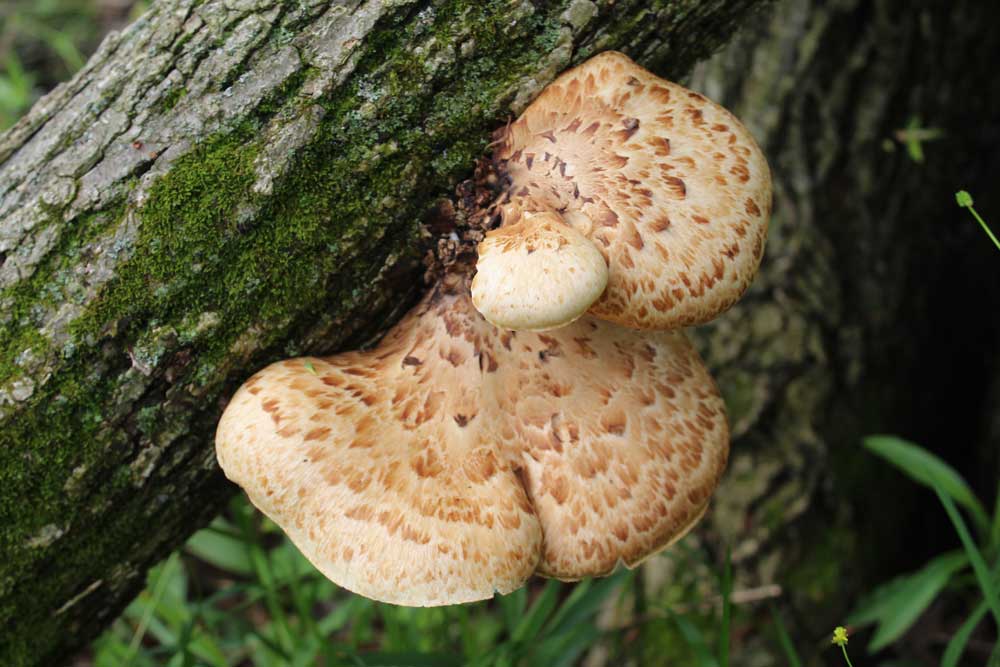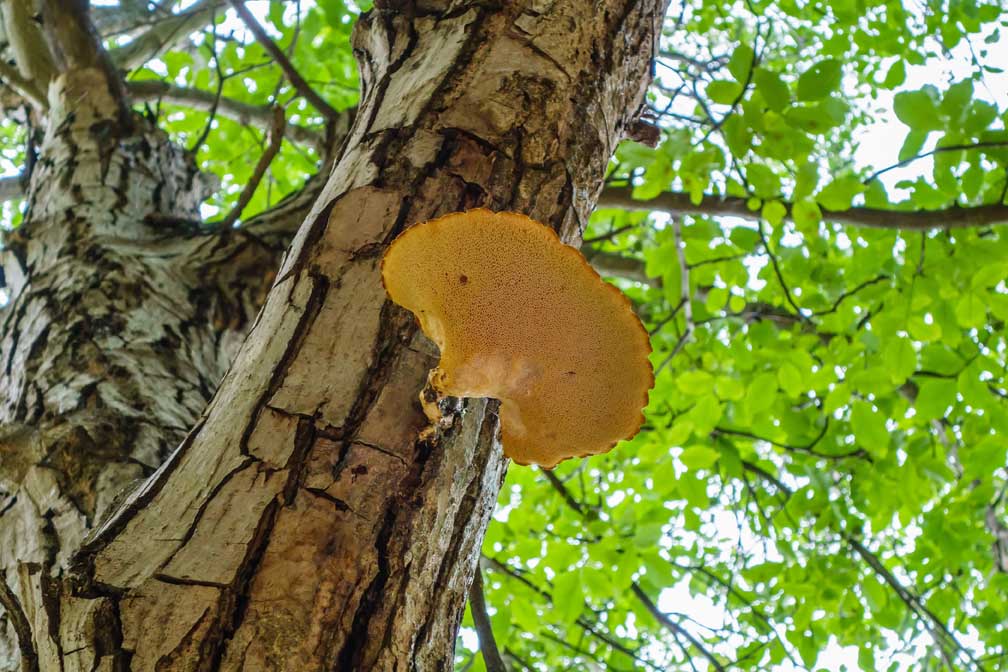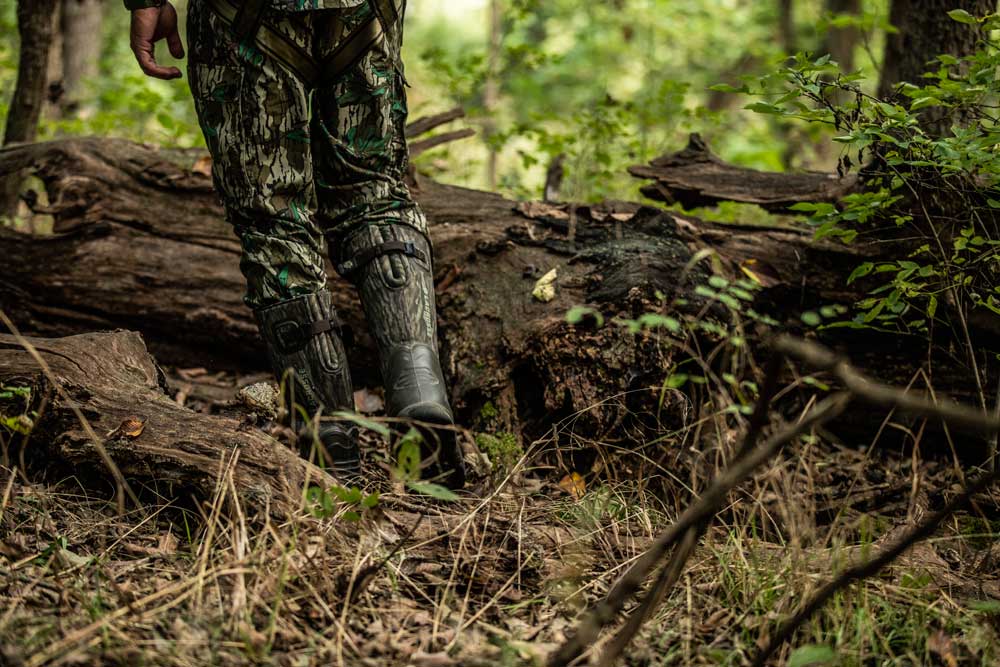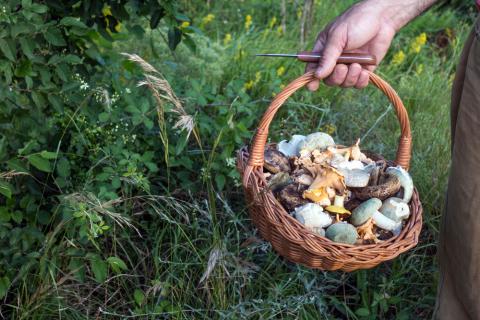With spring comes the incredible edible mushroom. Many venture out with the sole purpose of bringing back a bag of morel mushrooms. Even turkey hunters will keep an eye out for morel mushrooms and, if they find them, a turkey hunt often turns into a morel hunt. No one can blame them. Morel mushrooms are delicious.
The shame is that many step right over the delicious pheasant back mushroom on their quest for morel mushrooms. So that you don’t walk over them this spring without recognizing them, let’s get to know more about the pheasant back mushroom.

Pheasant Back Identification
There are no toxic look-alikes to confuse them with, so the pheasant back mushroom is great for beginning foragers looking for wild mushrooms. These mushrooms can be found in large numbers east of the Rocky Mountains. You will always find pheasant back mushrooms on fallen or dead hardwood trees. They seem to prefer dying elm trees more than anything, and they never sprout directly from the dirt.
There are no look-alikes to beware of, but there are many names for the pheasant back mushroom. For instance, it is also identified as the cerioporus squamosus, aka polyporus squamosus. Pheasant back mushrooms are also known as dryad’s saddle or pheasant’s back. The pheasant reference is in regards to the gorgeous pattern on its top cap that looks a lot like pheasant feathers. It is a relative to other wild mushrooms known as chicken of the woods and the hen of the woods.
When you're foraging for the dryad’s saddle, aka pheasant back mushroom, keep in mind it is a polypore. In other words, the underside does not have gills, but pores. After you harvest a pheasant back mushroom, turn it over and notice that the mushroom has pores, where other varieties of mushrooms have gills. They often grow in a collection of more than 20. You can find individual mushrooms in almost any size — from an inch across to over 12 inches. It is surprising that a freshly harvested pheasant back will smell more like a cucumber or watermelon rind than your typical mushroom.
Where to Find the Pheasant Back
If you are one of those lucky turkey hunters looking for morel mushrooms, you have probably stepped over a pheasant back mushroom. You will find that morel and pheasant back mushrooms make their appearance about the same time each year and generally prefer the same habitat. When you find pheasant back mushrooms, there are probably morel mushrooms not far away.
When looking for pheasant back mushrooms, head to the creek bottoms. You are not looking for standing water but a damp climate with a variety of healthy and dead timber close by. You will first notice pheasant backs in April and May.
If you find the south side of a dying elm tree or stump in the spring, you will probably find pheasant back mushrooms growing. As the temperatures at night increase, you will find them growing on either side of dead and dying hardwoods. Even in town or a city park, look for a grove of trees with a few dead or dying elm trees. If you can find that, you will probably find pheasant back mushrooms. If you have maple trees in your area, you can find them on healthy maple trees as well. It’s amazing that such a delicious treat goes unnoticed by so many.

What Makes a Pheasant Back Good to Eat?
Big, old pheasant backs are too tough to eat. You should know how to determine if a pheasant back mushroom is young and tender or mature and tough.
Generally, you want pheasant back mushrooms to measure no more than four inches across the cap. Any more than four inches across and it can be too tough to eat. Even then, you can run into small pheasant backs only three inches across that happen to be mature and tough. To know for sure you have a young and tender pheasant back, look at the underside of the mushroom. Regardless of the size of the pheasant back, if the pores are large, it’s a mature mushroom and it will be tough. If the pores are small — say, the size of pinholes — it is a tender young mushroom.
You can also use a pocket knife to determine if your pheasant back is young and tender enough to eat. Using your pocket knife, carefully drag the blade across the undercarriage of the cap. If the pores are easily removed, you have an ideal pheasant back to eat. If you cannot easily scrape off the pores, it is going to be tough. You can save the tough mature mushrooms for soup broth, but most will just discard them. Either way, you should know how to determine if the pheasant back is destined for broth or other recipes.
Prepping the Pheasant Back to Eat
Before you begin preparation, you should know the pheasant back mushroom does not taste like other mushrooms. Although it is a mushroom, it tastes more like a cucumber or watermelon rind. If this is your first experience with it, you should make sure your recipe is for the pheasant back mushroom. Otherwise, you will be surprised by the outcome.
Begin by washing the pheasant back, and then remove the stem if it has one. Then, scrape away the pores on the underside of the cap with a knife. Leaving the pores on will add a texture that most don’t care for, but you can leave them if you prefer. If this is your first time preparing pheasant back mushrooms, you may try one with the pores and one without to see which you prefer.
You probably cannot slice pheasant back mushrooms too thin. Those who cook with pheasant backs regularly will use a mandoline slicer to get the paper-thin slices they want. You need not be concerned about them falling apart. The pheasant back is quite hardy.
You will want to keep your pheasant back mushrooms moist while they are cooking to prevent them from drying out. It’s fine to brown or sauté mushrooms a bit, but heavy browning or sauteing will dry them out and make them tough. Cook them thinly sliced in a covered pan with butter, salt and a little wine. Cook until the wine evaporates and you can see the mushroom has slightly browned.
Serve this over asparagus and a bed of rice. You will be surprised at the cucumber- and watermelon-rind-like flavor. The taste is not one you would expect from a mushroom. Because of the unique flavor, some will sauté pheasant back with strawberries and rhubarb to serve over ice cream and topped with wild-berry syrup. It’s odd, but this mushroom makes a great dessert.

The Hunt Is On
The pheasant back is a forgiving mushroom. There is no toxic look-alike to worry about. They are easy to prepare and easy to cook. If you find morels on your next turkey hunt, look for pheasant back mushrooms close by and throw them in the bag, too. With any luck this spring, you can prepare fresh morel mushrooms and turkey for dinner. Then, follow it up with a great pheasant back mushroom recipe for dessert. Your friends and family will not believe that you can have wild mushrooms for the main course and dessert!






























